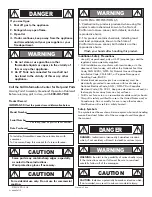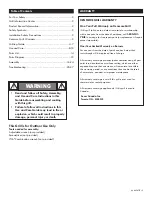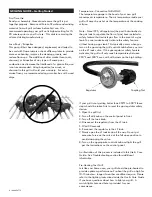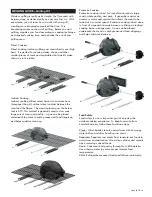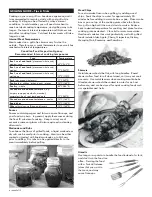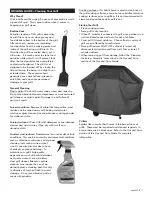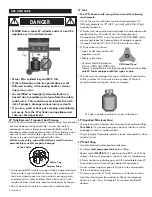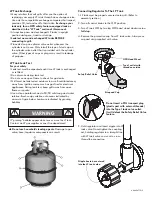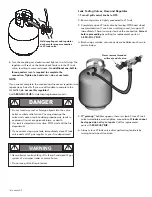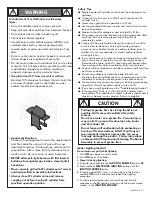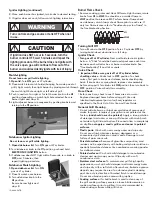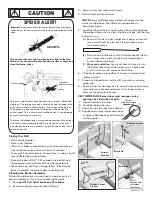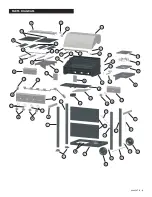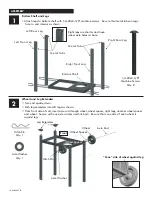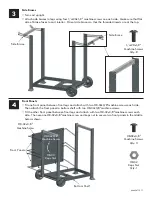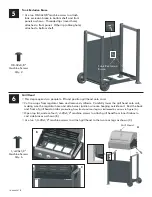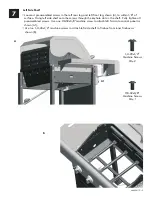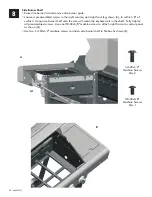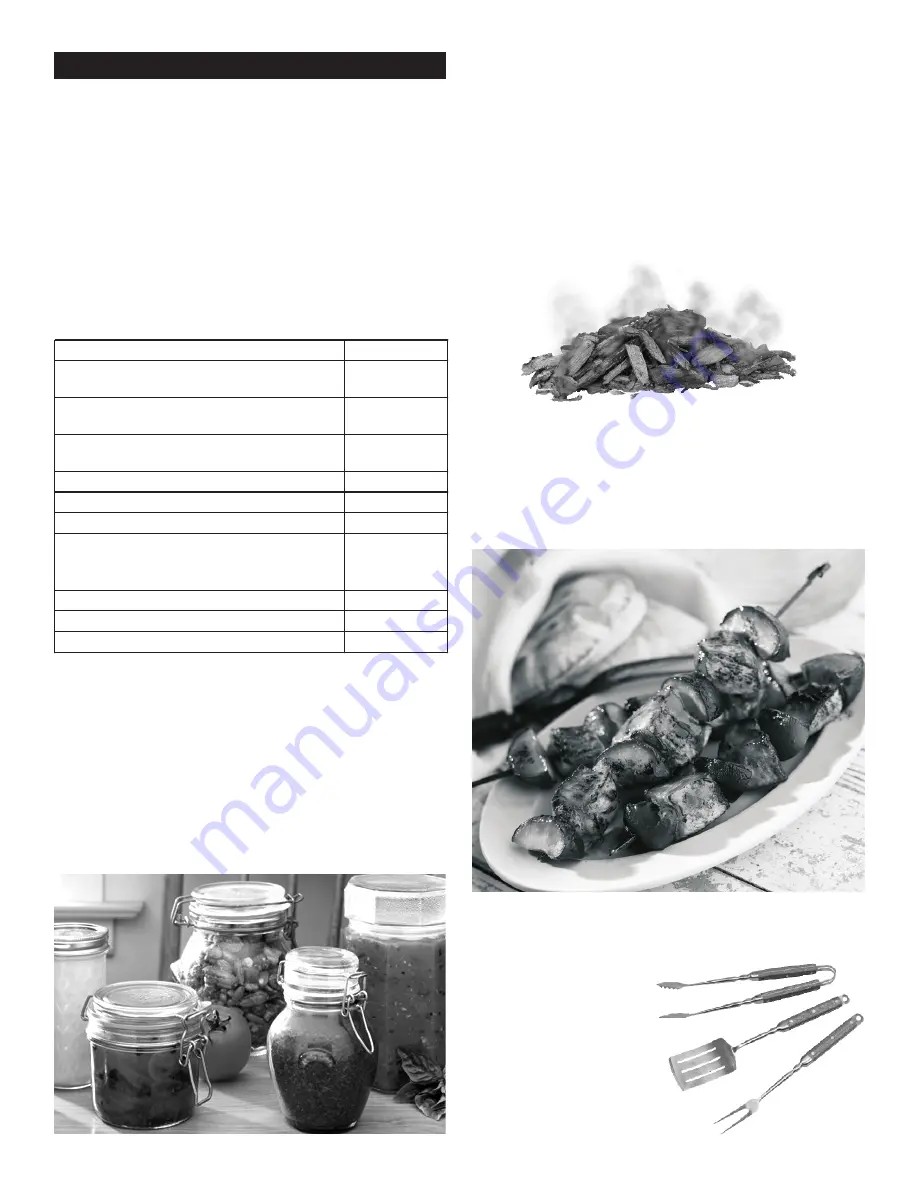
6 • 466424712
Cooking on your new grill is a hands-on experience, and it
is recommended to remain outside with your grill while
cooking. Grilling can be affected by many external
conditions. In cold weather, you will need more heat to
reach an ideal cooking temperature, and grilling may take
longer. The meat's internal temperature and thickness can
also affect cooking times. Cold and thicker meats will take
longer to cook.
Internal Meat Temperatures
Meat cooked on a grill often browns very fast on the
outside. Therefore, use a meat thermometer to ensure it has
reached safe internal temperatures.
Sauces
Sauces containing sugars and fats can cause flare-ups, and
your food may burn. In general, apply these sauces during
the final 10 minutes of cooking. Keep in mind, use of
excessive sauces or glazes will also require extra cleaning
afterwards.
Marinades and Rubs
To enhance the flavor of grilled foods, a liquid marinade or
dry rub can be used prior to cooking. Meat can be either
soaked or injected with liquid marinade up to 24 hours
prior to grilling. Dry rubs can be applied directly to the
meat immediately before grilling.
GRILLING GUIDE – Tips & Tricks
Wood Chips
For extra smoke flavor when grilling, try adding wood
chips. Soak the chips in water for approximately 30
minutes before adding to a smoke box or pan. Place smoke
box or pan on top of the cooking grate above the flame.
Turn grill on high until the wood starts to smoke. Reduce
heat to desired temperature for cooking, and place food on
cooking grate as desired. Close lid to retain more smoke.
Hardwood varieties that work particularly well with grilled
foods include Alder, Apple, Cherry, Grapevines, Hickory,
Mesquite, Oak, Rosemary and Sassafras.
Skewers
Metal skewers should be flat, with long handles. Round
skewers allow food to roll when turned, so it may not cook
as evenly. Use metal skewers when cooking meat kabobs.
Wooden skewers should be soaked in water for an hour
before use, and are best used for quick cooking foods such
as vegetables and fruits.
Utensils
Use tongs or a spatula to handle the food instead of a fork,
and don't turn the food too
often. Piercing the food
with a fork will release
juices that you want in
the meat, and may
cause flare-ups.
Food
Temperature
Beef, veal and lamb
(pieces and whole cuts) -
medium-rare
63°C (145°F)
Beef, veal and lamb
(pieces and whole cuts) -
medium
71°C (160°F)
Beef, veal and lamb
(pieces and whole cuts) -
well done
77°C (170°F
Pork
(pieces and whole cuts)
71°C (160°F)
Poultry
(e.g. chicken, turkey, duck) - pieces
74°C (165°F)
Poultry
- whole
85°C (185°F)
Ground meat and meat mixtures
(e.g.
burgers, sausages, meatballs, meatloaf,
casseroles) - beef, veal, lamb and pork
71°C (160°F)
Ground meat and meat mixtures
- poultry
74°C (165°F)
Egg dishes
74°C (165°F)
Others
(hot dogs, stuffing and leftovers)
74°C (165°F)
Canadian Food Inspection Agency
Recommended Internal cooking tempeaures
Summary of Contents for D02 M90225
Page 28: ......


